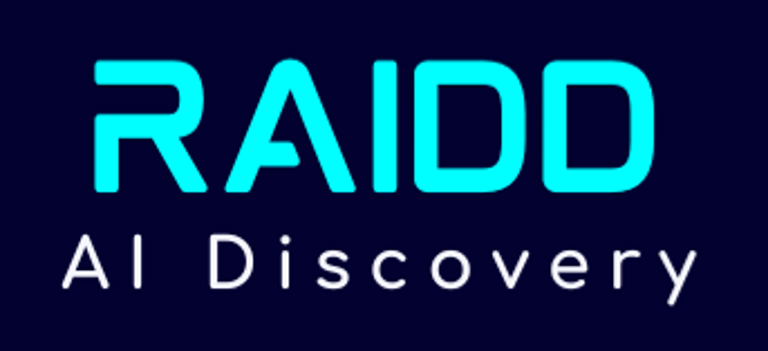Boost Your Sales & Marketing with Generative AI: Top 10 Innovative Applications
USE CASES


Discover how Generative AI is transforming sales and marketing with 10 powerful applications that boost efficiency, personalize customer experiences, and drive business growth. From smart chatbots to AI-driven pricing, learn how these innovations can give your business a competitive edge and future-proof your strategies.
Revolutionizing Sales & Marketing with Generative AI: Top 10 Game-Changing Applications
In today's fast-moving business world, Generative AI is changing how sales and marketing professionals work. This powerful technology can automate complex tasks, personalize customer interactions, and unlock new levels of creativity. Let's explore the top 10 ways Generative AI is transforming sales and marketing.
1. Hyper-Personalized Content Creation
Generative AI is revolutionizing content marketing by creating tailored messages for individual customers. By looking at customer preferences, behavior, and demographics, AI can create personalized email campaigns, social media posts, and even entire blog articles. This level of customization significantly increases engagement and builds stronger customer relationships.
How to get started: Explore AI-powered writing tools like Copy.ai or Jasper.ai. Start with a free trial to generate personalized email subject lines or social media posts based on your customer data.
2. Smart Chatbots and Virtual Sales Assistants
Modern AI-powered chatbots can now have natural conversations with potential customers. These virtual assistants can qualify leads, answer complex product questions, and guide users through the sales process, providing a smooth experience that combines the best of automated and human interactions.
How to get started: Look into platforms like MobileMonkey or ManyChat to create AI-powered chatbots for your website or Facebook page. Begin with basic FAQ responses and gradually expand to more complex interactions.
3. Predicting and Prioritizing Potential Customers
Generative AI can analyze past data to identify patterns that show which potential customers are most likely to buy. This helps sales teams focus their efforts on the most promising leads, saving time and increasing success rates.
How to get started: Implement a CRM system like HubSpot or Salesforce that offers AI-powered lead scoring features. Input your historical sales data to start benefiting from AI-driven insights.
4. Smart Pricing Strategies
AI excels at processing lots of information to determine the best pricing strategies. By considering factors like demand changes, competitor pricing, and what individual customers are willing to pay, AI can create flexible pricing models that increase revenue while keeping customers happy.
How to get started: Consider tools like Price Edge or Competera for AI-driven pricing optimization. Start by analyzing your historical pricing data and competitor information to identify opportunities for dynamic pricing.
5. AI-Powered Market Research and Trend Forecasting
Generative AI can analyze huge amounts of online data, including social media posts, news articles, and industry reports, to spot emerging market trends and consumer preferences. This helps marketing teams stay ahead of the curve, creating campaigns and products that resonate with changing customer needs.
How to get started: Try AI-powered social listening tools like Brandwatch or Sprout Social. Begin by monitoring key terms related to your industry to gain insights into emerging trends and customer sentiment.
6. Automated Testing and Campaign Improvement
Instead of manually creating different versions of marketing materials for testing, Generative AI can produce many variations of ad copy, email subject lines, and web pages. The AI then analyzes how well each version performs in real-time, continuously improving campaigns for maximum impact.
How to get started: Utilize AI-powered A/B testing tools like Optimizely or VWO. Start with testing email subject lines or ad headlines to see which versions perform best with your audience.
7. Understanding Customer Feelings and Managing Reputation
Generative AI is great at understanding the subtleties of human language, making it valuable for analyzing customer sentiment. By monitoring and interpreting customer feedback across various channels, AI can provide useful insights on how people perceive a brand and help companies address potential issues early.
How to get started: Explore sentiment analysis tools like Brandwatch or Lexalytics. Begin by analyzing customer reviews or social media mentions to understand overall sentiment towards your brand.
8. Optimizing for Voice and Image Searches
As more people use voice assistants and image searches, Generative AI helps marketers adapt their content for these new ways of searching. From creating natural-sounding responses for voice assistants to writing image descriptions that improve visual search results, AI ensures that brands remain easy to find in our changing digital world.
How to get started: Use tools like Alli AI or BrightEdge to optimize your content for voice search. Start by identifying common questions your customers ask and create content that directly answers these queries.
9. Personalized Product Suggestions
By analyzing customer behavior, purchase history, and even contextual data like weather or local events, Generative AI can create highly accurate product recommendations. This not only improves the customer experience but also increases opportunities for additional sales, boosting overall performance.
How to get started: Implement an AI-powered recommendation engine like Clerk.io or Nosto on your e-commerce platform. Begin with basic product recommendations based on viewing history and gradually refine based on performance.
10. Creating Marketing Materials
Generative AI is pushing the boundaries of creativity in marketing. From generating unique images and videos for social media campaigns to coming up with entire advertising concepts, AI is becoming an invaluable tool for creative teams. This not only speeds up the creative process but also opens up new possibilities for innovative and eye-catching marketing materials.
How to get started: Experiment with AI design tools like Dall-E or Midjourney to generate unique images for your marketing campaigns. Start with creating simple graphics for social media posts to get familiar with the technology.
Conclusion
The integration of Generative AI into sales and marketing is not just a trend—it's a transformative force that's redefining how businesses connect with their customers. By embracing these AI-driven solutions, companies can enhance efficiency, personalization, and creativity across their sales and marketing efforts. As the technology continues to evolve, the potential for innovation in this space is limitless, promising an exciting future for businesses ready to harness the power of Generative AI.
